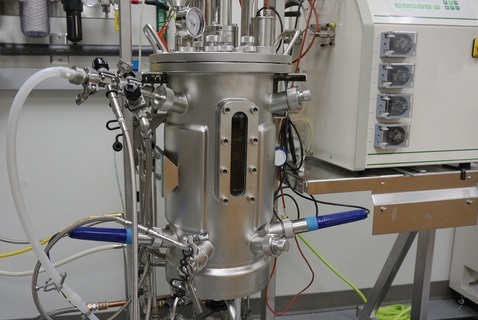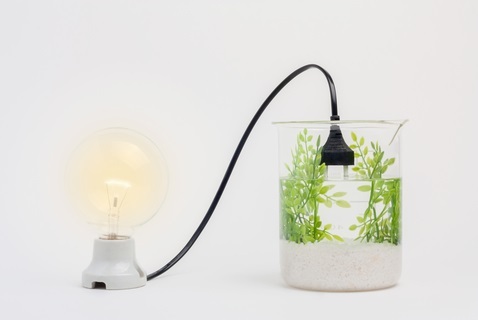
 Data Structure
Data Structure Networking
Networking RDBMS
RDBMS Operating System
Operating System Java
Java MS Excel
MS Excel iOS
iOS HTML
HTML CSS
CSS Android
Android Python
Python C Programming
C Programming C++
C++ C#
C# MongoDB
MongoDB MySQL
MySQL Javascript
Javascript PHP
PHP
- Selected Reading
- UPSC IAS Exams Notes
- Developer's Best Practices
- Questions and Answers
- Effective Resume Writing
- HR Interview Questions
- Computer Glossary
- Who is Who
Packed Bed Bioreactors
Introduction
Bioreactors are an essential part of bioprocessing, where they are used to cultivate microorganisms or cells and produce desired products. Bioreactors can be categorized based on their design, mode of operation, and type of organisms or cells cultivated. Packed bed bioreactors are a type of bioreactor commonly used in the bioprocessing industry.
These reactors have unique design features that make them ideal for the cultivation of cells or microorganisms. In this article, we will explore what packed bed bioreactors are, how they work, and their applications in various fields.
What are Packed Bed Bioreactors?
A packed bed bioreactor is a type of bioreactor that consists of a column filled with a solid matrix, usually made of plastic, glass, or ceramic. The matrix provides a surface area for cells or microorganisms to attach and grow and also serves as a support for the cells or microorganisms.
The cells or microorganisms are immobilized in the matrix and are not suspended in the liquid medium. The matrix is usually porous, allowing for the exchange of nutrients and oxygen between the cells and the medium. The medium flows through the matrix and is continuously replenished to maintain optimal growth conditions.
Packed bed bioreactors can be operated in various modes, including batch, fed-batch, and continuous. The mode of operation depends on the desired product and the specific requirements of the process.
In a batch mode, the medium is added to the bioreactor at the beginning of the process, and the cells or microorganisms are allowed to grow until the desired product is produced. In a fed-batch mode, the medium is added gradually to the bioreactor over time, allowing for better control of the growth rate and the production of high-quality products.
In a continuous mode, the medium is continuously added to the bioreactor, and the product is continuously harvested.

How do Packed Bed Bioreactors Work?
Packed bed bioreactors work by immobilizing cells or microorganisms in a solid matrix and providing optimal growth conditions for their growth and metabolism.
The matrix provides a large surface area for the cells or microorganisms to attach and grow, allowing for high cell densities and efficient mass transfer.
The matrix is also permeable, allowing for the exchange of nutrients and oxygen between the cells and the medium.
The growth of cells or microorganisms in packed bed bioreactors can be influenced by various factors, including the flow rate of the medium, the nutrient concentration, and the oxygen concentration.
The medium flow rate affects the rate of nutrient delivery to the cells or microorganisms and the removal of waste products. The nutrient concentration affects the growth rate of the cells or microorganisms and their metabolism. The oxygen concentration affects the rate of respiration of the cells or microorganisms and their metabolism.
Applications of Packed Bed Bioreactors
Packed bed bioreactors have numerous applications in various fields, including biopharmaceuticals, food and beverage, environmental biotechnology, and bioenergy.
Biopharmaceuticals
Packed bed bioreactors are widely used in the biopharmaceutical industry to produce various therapeutic proteins, antibodies, and vaccines. Packed bed bioreactors are preferred over other bioreactor types because they allow for high cell densities, high productivity, and easy scale-up. Packed bed bioreactors can be used to produce a wide range of products, from monoclonal antibodies to recombinant proteins.
Food and Beverage
Packed bed bioreactors are also used in the food and beverage industry for the production of various food ingredients and additives, such as enzymes, flavours, and preservatives. Packed bed bioreactors are preferred over other bioreactor types because they allow for high cell densities, high productivity, and easy recovery of the desired product. Packed bed bioreactors can be used to produce a wide range of food ingredients and additives, such as enzymes for cheese production, flavours for beverages, and preservatives for baked goods.
Environmental Biotechnology
Packed bed bioreactors are also used in environmental biotechnology for the treatment of wastewater and the remediation of contaminated soil and water. Packed bed bioreactors can be used to remove pollutants from wastewater by utilizing microorganisms that degrade the pollutants.
Packed bed bioreactors can also be used to remediate contaminated soil and water by utilizing microorganisms that break down the contaminants.
Bioenergy
Packed bed bioreactors are also used in the production of biofuels, such as ethanol and biodiesel. Packed bed bioreactors can be used to cultivate microorganisms that produce ethanol and biodiesel from renewable resources, such as sugar cane and algae.
Packed bed bioreactors are preferred over other bioreactor types because they allow for high cell densities and high productivity.

Advantages of Packed Bed Bioreactors
Packed bed bioreactors offer several advantages over other bioreactor types, including ?
High Cell Densities
Packed bed bioreactors allow for high cell densities due to the large surface area provided by the matrix, resulting in higher productivity.
Easy Scale-Up
Packed bed bioreactors are easy to scale up from lab-scale to commercial-scale due to their simple design.
Low Shear Stress
Packed bed bioreactors generate low shear stress, which is beneficial for the growth and metabolism of cells or microorganisms.
High Product Quality
Packed bed bioreactors allow for the continuous removal of waste products, resulting in higher product quality.
Reduced Contamination Risk
Packed bed bioreactors are less prone to contamination due to the immobilization of cells or microorganisms in the matrix.
Disadvantages of Packed Bed Bioreactors
Packed bed bioreactors also have some disadvantages, including ?
Matrix Clogging
The matrix can become clogged with cell debris, limiting nutrient and oxygen transfer.
Limited Mass Transfer
The limited mass transfer through the matrix can limit the growth and metabolism of cells or microorganisms.
Matrix Degradation
The matrix can degrade over time, resulting in the release of microorganisms or cells into the medium.
Conclusion
Packed bed bioreactors are a type of bioreactor commonly used in the bioprocessing industry. They offer several advantages over other bioreactor types, including high cell densities, easy scale-up, low shear stress, high product quality, and reduced contamination risk.
Packed bed bioreactors have numerous applications in various fields, including biopharmaceuticals, food and beverage, environmental biotechnology, and bioenergy. Despite their advantages, packed bed bioreactors also have some disadvantages, including matrix clogging, limited mass transfer, and matrix degradation.
Overall, packed bed bioreactors are a valuable tool for the cultivation of cells or microorganisms and the production of desired products.

